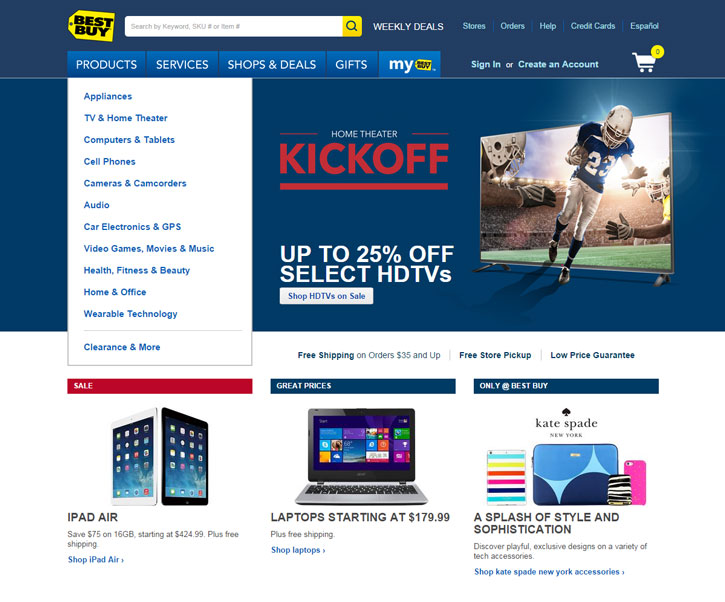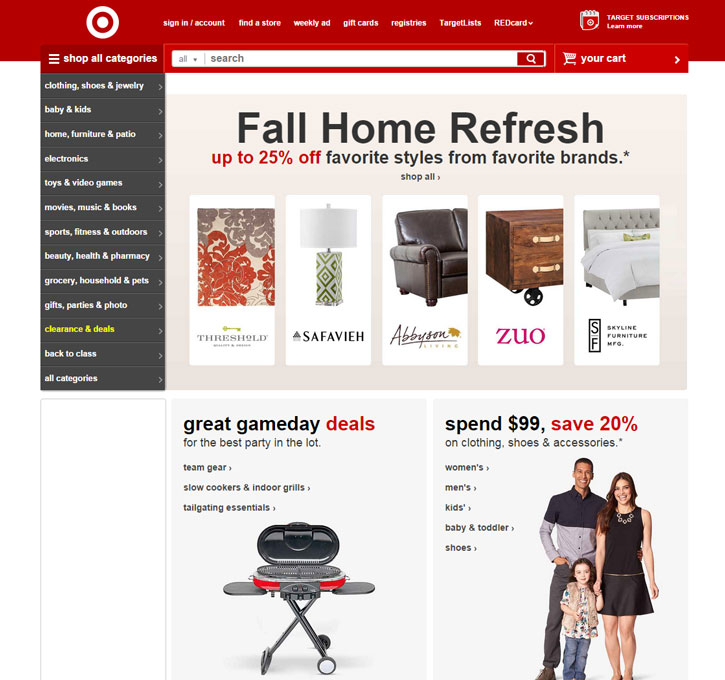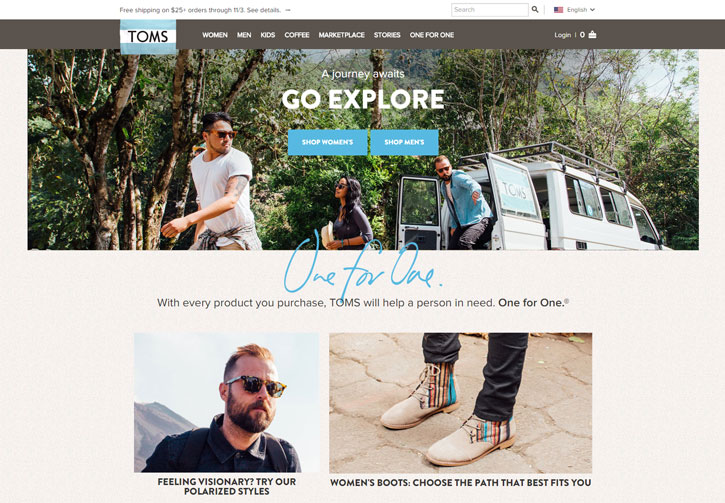
When arriving to a company website, it’s safe to assume that the homepage will tell quite a bit about its positioning and goals. Naturally, most for-profit companies will make selling products a primary focus. However, the way in which companies structure their messaging to sell can be quite interesting.
Brands often lean towards using one of two types of marketing messaging: Product Marketing or Mission Marketing. The difference between Product and Mission Marketing are important, so let’s walk-through a few examples of each and discuss the impact of one versus the other.
Understanding Product Marketing
Product Marketing focuses on highlighting the features and benefits of the products to be sold. It uses promotional messaging to drive customers to action. That action is primarily intended to be purchases but can include secondary actions such as joining a mailing list or following the company. Even in with these secondary channels the content will likely sway towards the promotional side. In Product Marketing, the messaging tends to be more quantitative and focused on highlighting sales and pricing incentives, repeat purchasing benefits, loyalty programs and in-store product placement. Another way to frame Product Marketing is with the question: What does this product do for you (the customer)? Below are two examples of companies that embody Product Marketing:
Best Buy
When first arriving at the Best Buy website, the visitor is immediately hit with some half-dozen messages related to product sales and incentives. The site’s navigation is structured around their different product categories. Even the secondary areas, outside the core product navigation, are additional purchasing-related activities such as ‘gifts’, ‘orders’, ‘shops & deals’, etc. There is little to no information surrounding Best Buy’s mission or values as a company. Rather, they focus their attention on promotional messaging to drive customers to purchase.
Target
When arriving at the Target website, the visitor is hit with a number of purchasing-related messages. The site’s navigation has almost exactly the same structure as Best Buy with a focus on driving customers to the product categories. The same secondary areas exist, such as ‘find a store’, ‘weekly ad’, ‘gift card’, etc., but they do a slightly better job of highlighting their REDcard offer (but even that is only a tiny link). Target’s primary focus is also on promotional messaging to drive purchases.
Understanding Mission Marketing
Mission Marketing focuses on highlighting the values and impact a company’s products represent and uses inspirational messaging to drive customers to action. That action might also be focused on purchasing, but often primarily emphasizes secondary actions such as joining a mailing list or following the company on social media. Even in those secondary channels, it’s likely that the content sways towards the promotional side. The messaging tends to be more qualitative and focused on highlighting cause education and awareness generation, building communities of like-minded people and inspirational figures embodying the product lifestyle. Another way to frame Mission Marketing is with the question: How does this product make you (the customer) feel? Below are two examples of companies that embody Mission Marketing:
TOMS Shoes
When arriving at the TOMS website, the visitor is immediately drawn to the front-and-center ‘One for One‘ banner. TOMS places great emphasis on one of their social causes, donating one pair of shoes for every pair of shoes sold, that was responsible for much of their early traction. TOMS has often been profiled as a leading socially-conscious brand and a pioneer of the ‘one for one’ model, which has been replicated by companies like Warby Parker. They tie their content strategy (i.e. social media and blogging) to promoting the larger ‘mission’ their company embodies: Helping address the issues of poverty and the promotion of social entrepreneurship. Spend time navigating the site and you’re bound to see many messages about corporate responsibility.
Patagonia
Although, when arriving at the Patagonia website, the messaging isn’t as direct as TOMS, it only takes a moment exploring the navigation to see the emphasis on their larger mission of environmentalism and sustainable manufacturing. The ‘Inside Patagonia’ section leads users to an area where different initiatives are highlighted, including Vote the Environment, Common Threads, The Footprint Chronicles, and Sustainable Apparel Coalition. Patagonia has also been hailed as a leader in social entrepreneurship and has even registered as a B-Corporation (Benefits Corporation). Similar to TOMS, much of Patagonia’s content highlights their social efforts or the lifestyle their products embody, such as their #Find_Away campaign.
SEE ALSO: Unlocking Growth in Online Retail
Deciding on a Product Focus vs. Mission Focus
Broadly, it seems as though some companies are naturally geared towards Product Marketing versus Mission Marketing. Product Marketing works well for companies that sell price-focused commodities or a wide-range of product types, while Mission Marketing works well for companies that sell proprietary branded products or a narrow product range. Regardless, here are a few factors to consider when evaluating one marketing focus versus the other:
Measurable
Given that Product Marketing is more focused on the quantitative (i.e. product sales, pricing discounts, etc.), it’s easier to measure its impact on the bottom line. Running new messaging focused on pricing discounts can easily be correlated to new revenue. In addition, messaging can be ‘tested’ using methods such as A/B testing to see how different promotions affect consumer behavior. On the Mission Marketing side, however, it’s harder to measure the direct impact your larger missions have on revenue. Messaging can’t be altered and, therefore, tested as quickly as promotions-focused messaging otherwise one runs the risk of consumers not believing the messaging to be authentic. Customers won’t trust a brand that often changes its beliefs.
Adaptable
Mission Marketing bodes well for capitalizing on consumer trends, such as a shift towards organic, locally-sourced or sustainably-created products. However, similar to the ‘measurable’ factor, it’s important not to run the risk of losing perceived authenticity by changing focus and jumping from one trend to the next. Product Marketing provides some flexibility in the form of ‘economic trends’ and allows companies to move specific products more aggressively as consumer purchasing patterns change (i.e. due to seasonality, product popularity, etc.)
Differentiable
Product Marketing is often harder to employ as a means of differentiation as any company can offer similar pricing incentives or sales. Focusing one’s messaging on the larger mission allows companies to craft a unique story that can’t be similarly mimicked by competitors. It also lends itself to unique content that has the potential to go ‘viral’ with the right consumer audience.
In the end, every company has to make the decision regarding how they want to position themselves and where they will focus their messaging. Naturally things aren’t black-and-white and companies can draw on elements of both marketing types. The key is to stay consistent so as to not lose perceived authenticity with their audience.



